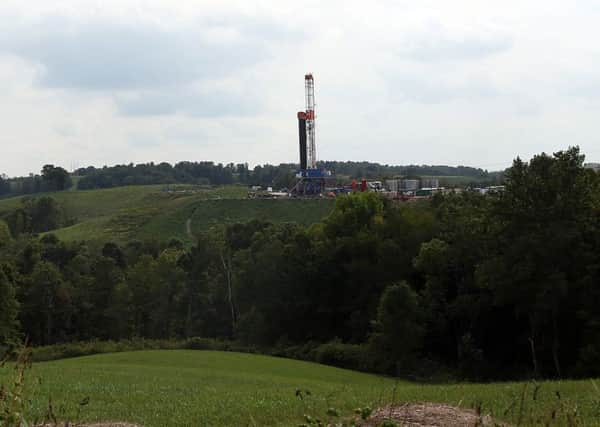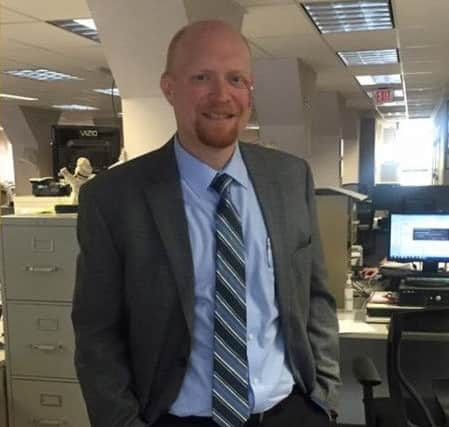Communities in Notts are split over fracking


Over the past two weeks, your Chad has carried articles on the pros and cons of fracking, especially as two energy companies have licences to extract shale gas in Nottinghamshire.
These articles have been based on a trip to America.
Chemical giant INEOS invited a group of UK journalists, including me, to see how shale gas has transformed parts of south-west Pennsylvania.
Advertisement
Hide AdAdvertisement
Hide Ad

I have referred to the trip as a charm offensive – and that is what it was.
We stayed in an area south of Pittsburgh which, on the face of it, was enjoying prosperity.
The area was booming – and those behind plans to frack in the East Midlands believe the same could happen here.
We were also told fracking would be safe in a heavily regulated industry.
Advertisement
Hide AdAdvertisement
Hide Ad

On my return home, I was invited by Paul Frost, of Frack Free Mansfield, to a film show “to see the other side of story”.
A side where people in the States are suffering health problems they claim are associated with fracking operations in their communities.
It was a different picture painted to the one I had seen in Pennsylvania and Ohio.
Last week in your Chad, Mr Frost outlined why he believes fracking is not the way forward.
Advertisement
Hide AdAdvertisement
Hide AdHe wrote: “Can’t we see better, more sustainable, longer-term economic development options for our area – options that do not risk our water supply, our landscape, our community cohesion?
“That will not divide people and set themselves against each other as we have bitter experience of in these parts?
“Mansfield and the former coalfield areas of the East Midlands and Yorkshire should not be prepared to act as a “sacrifice zone”, or the “desolate north” one fracking advocate spoke about in an unguarded moment when suggesting no fracking would take place in the leafy, well-heeled south.”
But INEOS says fracking is a “tried and tested” process and can be conducted safely.
Advertisement
Hide AdAdvertisement
Hide AdTom Pickering, director of INEOS Upstream, said: “The Royal Society and Royal Academy of Engineering have concluded shale gas can be extracted safely when operations are conducted properly with appropriate regulation.
“Where there have been instances in the US of environmental damage, this has been caused by poor operational practice and inadequate regulation, rather than the fracking process itself.”
Like everything in life, there are two sides to a story
Journalist Dave Conti formerly reported on shale and other energy news at the Pittsburgh Tribune-Review.
He says: “There was much talk in the early days of shale development that fracking and all that came with it would drastically alter the landscape of Western Pennsylvania.
Advertisement
Hide AdAdvertisement
Hide Ad“A decade later, the prediction clearly came true, but not the one sounded by environmental alarmists.
“Shale drilling brought economic development to areas which had not seen real investment in generations.
“Whole communities are unrecognisable from where they were just 10 years ago, as older businesses found new customers lured by gas producers and the supply chain, and new businesses moved in.
“Meanwhile, environmental impact has only been seen in a few isolated cases of water pollution or erosion.
Advertisement
Hide AdAdvertisement
Hide Ad“Drillers have injected billions of dollars into the local economy, through investments in offices, contractors and infrastructure, as well as from fees collected by the state and distributed to communities.
“Towns can buy fire trucks and fix sewer systems. Farmers who lease land to companies can invest in new equipment.
“Where conflict remains is in the communities that have not seen such benefits – those further away from gas development areas – that now face the prospect of pipelines passing beneath their homes.
“To fully take advantage of shale, the region must get the gas to outside markets – and that requires more pipelines.
Advertisement
Hide AdAdvertisement
Hide Ad“Opposition to building this infrastructure through communities which don’t expect to see much benefit is growing and threatening to slow the positive change that was spreading through shale country.”
So that’s the pros and cons. Who is right? Only time will tell, but one thing is for certain,
The debate surrounding fracking will continue for months and years to come.